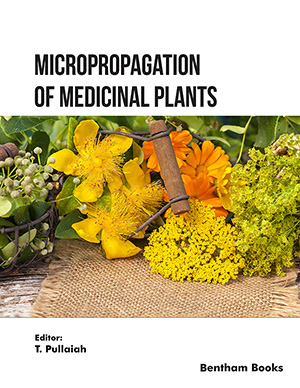Abstract
Myocardial cell injury and following sequelae are the primary reasons for death globally. Unfortunately, myocardiocytes in adults have limited regeneration capacity. Therefore, the generation of neo myocardiocytes from non-myocardial cells is a surrogate strategy. Transcription factors (TFs) can be recruited to achieve this tremendous goal. Transcriptomic analyses have suggested that GATA, Mef2c, and Tbx5 (GMT cocktail) are master TFs to transdifferentiate/reprogram cell linage of fibroblasts, somatic cells, mesodermal cells into myocardiocytes. However, adding MESP1, MYOCD, ESRRG, and ZFPM2 TFs induces the generation of more efficient and physiomorphological features for induced myocardiocytes. Moreover, the same cocktail of transcription factors can induce the proliferation and differentiation of induced/pluripotent stem cells into myocardial cells. Amelioration of impaired myocardial cells involves the activation of healing transcription factors, which are induced by inflammation mediators; IL6, tumor growth factor β, and IL22. Transcription factors regulate the cellular and subcellular physiology of myocardiocytes to include mitotic cell cycling regulation, karyokinesis and cytokinesis, hypertrophic growth, adult sarcomeric contractile protein gene expression, fatty acid metabolism, and mitochondrial biogenesis and maturation. Cell therapy by transcription factors can be applied to cardiogenesis and ameliorating impaired cardiocytes. Transcription factors are the cornerstone in cell differentiation.
Keywords: Myocardial infarction, regeneration, myocardiocytes, transcription factor, transdifferentiation, reprogramming, angiogenesis, cell lineage, cell plasticity, somatic cell, stem cell.
[http://dx.doi.org/10.1161/CIR.0000000000000950] [PMID: 33501848]
[http://dx.doi.org/10.3389/fbioe.2020.00455] [PMID: 32528940]
[http://dx.doi.org/10.1016/j.yjmcc.2019.10.005] [PMID: 31669609]
[http://dx.doi.org/10.1161/CIRCRESAHA.116.302752] [PMID: 25593278]
[http://dx.doi.org/10.1161/CIRCRESAHA.118.311208] [PMID: 29976685]
[http://dx.doi.org/10.1161/CIRCRESAHA.116.309040]
[http://dx.doi.org/10.1016/j.bbamcr.2015.10.014] [PMID: 26524115]
[http://dx.doi.org/10.3390/jcdd6010002] [PMID: 30583498]
[http://dx.doi.org/10.1161/CIRCULATIONAHA.118.033703] [PMID: 29666070]
[PMID: 29257325]
[http://dx.doi.org/10.3389/fgene.2020.588602] [PMID: 33193725]
[http://dx.doi.org/10.1161/CIRCRESAHA.112.271148] [PMID: 22931955]
[http://dx.doi.org/10.1038/s41598-020-80848-3] [PMID: 33452355]
[http://dx.doi.org/10.1093/eurheartj/ehs096] [PMID: 22621821]
[http://dx.doi.org/10.1016/j.cjca.2014.06.023] [PMID: 25442431]
[http://dx.doi.org/10.1038/nature08039] [PMID: 19396158]
[http://dx.doi.org/10.1007/s12265-012-9412-5] [PMID: 23054660]
[http://dx.doi.org/10.1038/nature11139] [PMID: 22660318]
[http://dx.doi.org/10.15252/embj.201387605] [PMID: 24920580]
[http://dx.doi.org/10.1038/nature11044] [PMID: 22522929]
[http://dx.doi.org/10.1002/cbin.10813] [PMID: 28656724]
[http://dx.doi.org/10.1161/01.CIR.0000167553.49133.81] [PMID: 15883211]
[http://dx.doi.org/10.1002/jcp.25783] [PMID: 28063225]
[http://dx.doi.org/10.1016/j.stemcr.2017.09.003] [PMID: 28988988]
[http://dx.doi.org/10.1038/nature19815] [PMID: 27723741]
[http://dx.doi.org/10.1161/CIRCULATIONAHA.108.778795] [PMID: 18625890]
[http://dx.doi.org/10.1038/nature13233] [PMID: 24776797]
[http://dx.doi.org/10.1016/j.apsb.2019.09.003] [PMID: 32082976]
[http://dx.doi.org/10.1089/hum.2011.009] [PMID: 23987185]
[http://dx.doi.org/10.1038/nmeth.3312] [PMID: 25730490]
[http://dx.doi.org/10.1016/j.biomaterials.2018.11.034] [PMID: 30513475]
[http://dx.doi.org/10.1038/nature17959] [PMID: 27251288]
[http://dx.doi.org/10.1161/CIRCRESAHA.116.308741] [PMID: 28209718]
[http://dx.doi.org/10.1038/ncomms9243] [PMID: 26354680]
[http://dx.doi.org/10.1186/s13619-021-00077-5] [PMID: 34060005]
[http://dx.doi.org/10.2174/1566524021666210712144638]
[http://dx.doi.org/10.2174/156652409787847218] [PMID: 19355911]
[http://dx.doi.org/10.15252/embj.201490563] [PMID: 25712211]
[http://dx.doi.org/10.1042/BSR20200833] [PMID: 33057659]
[http://dx.doi.org/10.1038/srep41781] [PMID: 28155919]
[http://dx.doi.org/10.1038/s41467-018-07333-4]
[http://dx.doi.org/10.1002/ejhf.1700] [PMID: 31863561]
[http://dx.doi.org/10.1016/j.jjcc.2018.05.002] [PMID: 30172684]
[http://dx.doi.org/10.1016/j.diff.2016.01.001] [PMID: 26915912]
[http://dx.doi.org/10.1371/journal.pone.0035824] [PMID: 22545141]
[http://dx.doi.org/10.1016/j.yjmcc.2009.08.018] [PMID: 19729017]
[http://dx.doi.org/10.1161/CIRCULATIONAHA.109.868885] [PMID: 19786631]
[http://dx.doi.org/10.1161/JAHA.116.005135] [PMID: 28739862]
[http://dx.doi.org/10.1002/jmr.2602] [PMID: 27995655]
[http://dx.doi.org/10.1016/j.celrep.2017.09.005] [PMID: 28954220]
[http://dx.doi.org/10.1161/CIRCULATIONAHA.116.024145] [PMID: 28167635]
[http://dx.doi.org/10.1161/CIRCRESAHA.116.309040] [PMID: 28302741]
[http://dx.doi.org/10.3390/jcdd3030026] [PMID: 27630998]
[http://dx.doi.org/10.1172/jci.insight.91068] [PMID: 28878124]
[http://dx.doi.org/10.1038/nature02446] [PMID: 15034593]
[http://dx.doi.org/10.1038/35070587] [PMID: 11287958]
[http://dx.doi.org/10.1038/nm1040] [PMID: 15107841]
[http://dx.doi.org/10.1038/nature15372] [PMID: 26375005]
[http://dx.doi.org/10.1126/scitranslmed.aaa5171] [PMID: 25834111]
[http://dx.doi.org/10.1038/nm.3778] [PMID: 25581518]
[http://dx.doi.org/10.1016/j.stem.2016.02.003] [PMID: 26942853]
[http://dx.doi.org/10.1242/dev.126649] [PMID: 26628091]
[http://dx.doi.org/10.1016/j.ydbio.2012.02.018] [PMID: 22374218]
[http://dx.doi.org/10.1073/pnas.1208863110] [PMID: 23248315]
[http://dx.doi.org/10.1038/s41467-018-03019-z] [PMID: 29453456]
[http://dx.doi.org/10.7554/eLife.05871] [PMID: 25830562]
[http://dx.doi.org/10.1038/ncb3149] [PMID: 25848746]
[http://dx.doi.org/10.1016/j.cell.2009.04.060] [PMID: 19632177]
[http://dx.doi.org/10.1371/journal.pone.0155456] [PMID: 27175488]
[http://dx.doi.org/10.1161/CIRCULATIONAHA.115.019357] [PMID: 26841808]
[http://dx.doi.org/10.1172/JCI59472] [PMID: 22080862]
[http://dx.doi.org/10.1016/j.devcel.2018.01.021] [PMID: 29486195]
[http://dx.doi.org/10.1038/ng.3929] [PMID: 28783163]
[http://dx.doi.org/10.1038/nature20173] [PMID: 27798600]
[http://dx.doi.org/10.1016/j.cell.2014.03.032] [PMID: 24766806]






























